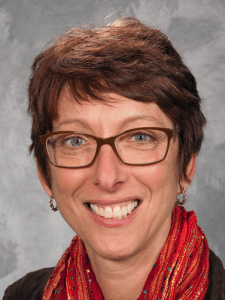Family-centered Care | December 2018 Hearing Review
Phonak has convened a select group of hearing healthcare experts who propose an audiologic treatment shift from a site-of-lesion focus to a family-centered care perspective as a means of increasing the value of our services and the uptake of hearing devices. This paper is the seventh in a series of several common (mis-)beliefs or myths challenged by the authors. Click here to access Mythbusters #1, Mythbusters #2, Mythbusters #3, Mythbusters #4, Mythbusters #5, and Mythbusters #6.
Many of us are intimidated by the thought of inviting family members into the audiology appointment. What if the family member starts bringing up concerns that take the conversation off track? What if the patient starts to argue with his or her spouse? What if the adult child begins to question my expertise? Let’s face facts, audiologists are not family counselors. Rather than encouraging family members to join our appointments, many of us decide to focus solely on the patient. However, we propose that including family members in the appointment actually facilitates the appointment and the patient’s acceptance of our recommendations.
It is possible to structure the conversation with patients and family members using tools such as the Goal Sharing for Partners Strategy (GPS)1 or an adapted version of the Client Oriented Scale of Improvement (COSI).2 (To adapt the COSI ask both the person with hearing loss and the family member to list situations where they would like the person with hearing loss to hear better.) With such a tool, individuals are invited to speak at specific times and on specific topics. In this way, every person in the appointment has the opportunity to be heard and it is made clear that their contribution is appreciated. If the conversation begins to go off track, the GPS or COSI form can be used to comfortably direct patients and family members back to specific questions.
Rather than complicating matters, these conversations can be valuable to the family members. For instance, when we ask people with hearing loss to consider how their hearing impacts his or her spouse, there is often a pause because this is rarely considered. When we ask a normal-hearing spouse to tell her partner how hearing loss has impacted her or him, the spouse is often grateful for the opportunity to share the experience.3 After a discussion like this, family members frequently comment that they had never discussed these topics before. With a clear understanding of how each individual is impacted by hearing loss, each family member may be more willing to invest in the suggested management options.
A novel and unstructured approach that quickly generates conversation among family members is to use a technique known as “photovoice,” in which each partner is asked to independently take photographs of specific listening situations in which they often communicate. These photographs can be used as conversation starters in which each family member can voice their feelings about communication in the particular situation, and how they dealt with it at the time. The audiologist can provide communication advice that family members can directly identify with. In a recent study,4 we found couples were very willing to engage in this process, with couples noting that the exercise had assisted with problem solving, facilitated conversation, and gave insight into their partner’s perspective.
In today’s hearing healthcare environment with direct-to-consumer hearing devices, audiologists have to demonstrate their worth. We know we can achieve better hearing rehabilitation outcomes based on our careful testing and hearing aid fitting. But, just as important, we can achieve better outcomes by including family members throughout the rehabilitation process (eg, in the hearing aid selection and orientation process). Patients can make more confident decisions about selecting hearing aid features after discussing this with a family member who also learned about options and prices during the appointment. Family members should be more willing to practice effective communication strategies at home after learning about the benefits and limitations of hearing aids during the audiology appointment. Finally, when patients and their family members see the personalized approach that their audiologist takes, they will better understand the value of working cooperatively with an audiologist.
A challenge: The next time a family member joins a patient in an initial appointment, ask the following questions during the case history: 1) To the family member: “What are the problems that you think your (spouse, parent, etc) faces because of his/her hearing loss?” 2) To the patient: “What are the problems that you think your (spouse, child, etc) faces because of your hearing loss?” If you find that family members have difficulty generating problems, ask them to bring photos to their next appointment and see how photovoice can start a constructive conversation.
References
-
Preminger JE, Lind C. Assisting communication partners in the setting of treatment goals: The development of the goal-sharing for partners strategy. Semin Hear. 2012;33(01):053-064.
-
Dillon H, James A, Ginis J. Client Oriented Scale of Improvement (COSI) and its relationship to several other measures of benefit and satisfaction provided by hearing aids. J Am Acad Audiol.1997;8(1):27-43.
-
Hickson L, Singh G. Mythbusters’ Myth #3: “Many patients do not want their family in the room.” Hearing Review.2018;25(3):26.
-
Saunders GH, Dillard L, Frederick MT, Silverman SC. Examining the utility of “photovoice” as a tool for audiologists and audiology researchers. J Am Acad Audiol.In press.
About the Authors: Jill Preminger, PhD, is Division Chief of Communicative Disorders and Program Director for Audiology at the University of Louisville School of Medicine, Louisville, Ky. Gabrielle Saunders, PhD, was Associate Director of the RR&D National Center for Rehabilitative Auditory Research (NCRAR) until August 2018, and she is now Research Area Manager for eHealth at Eriksholm Research Center in Denmark. Gurjit Singh, PhD, is Senior Research Audiologist at Phonak Canada, and an Adjunct Professor at Ryerson University and Adjunct Lecturer at the University of Toronto.
Correspondence can be addressed to Dr Preminger at: [email protected]
Citation for this article: Preminger J, Saunders G, Singh G. Mythbusters’ myth #7: “Including family members in decisions just complicates matters.” Hearing Review. 2018;25(12)[Dec]:30.








